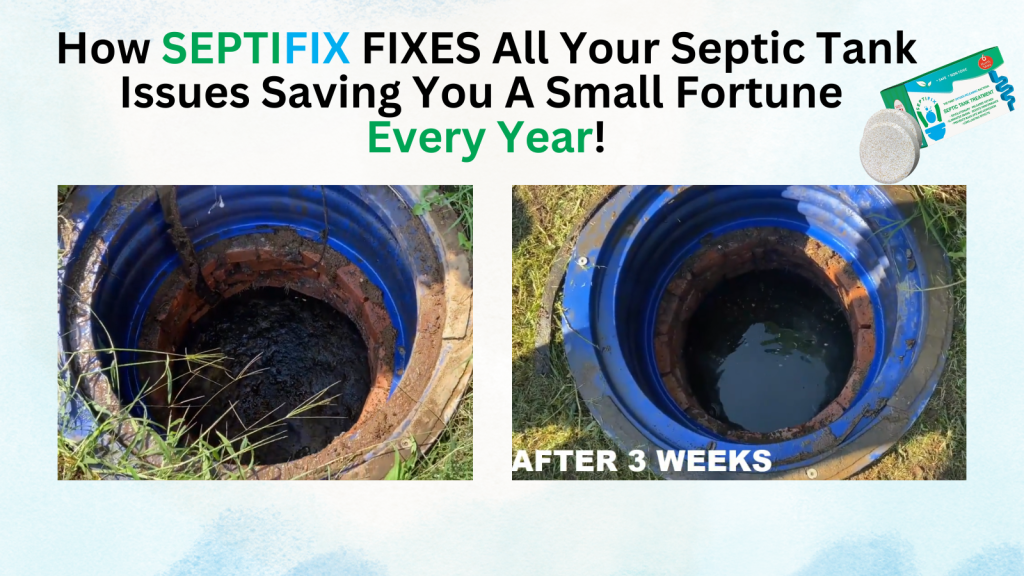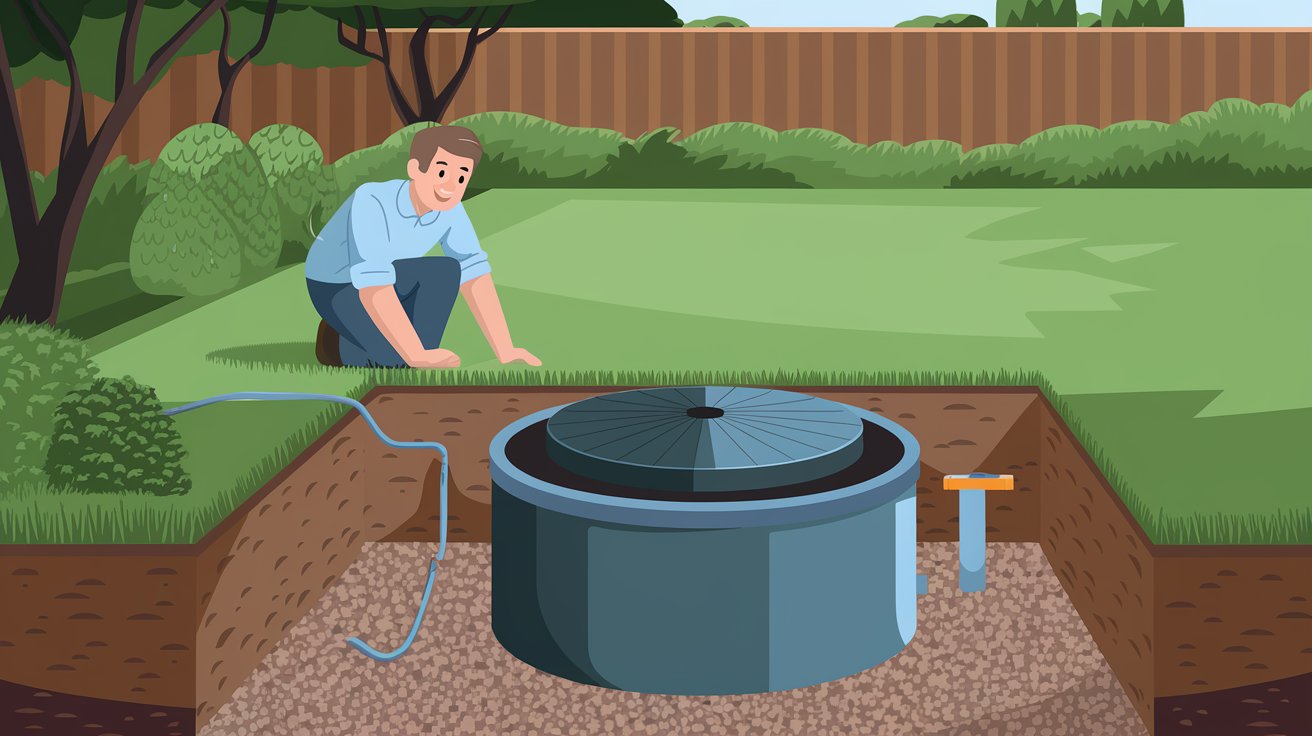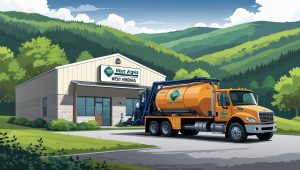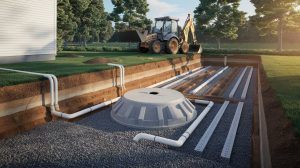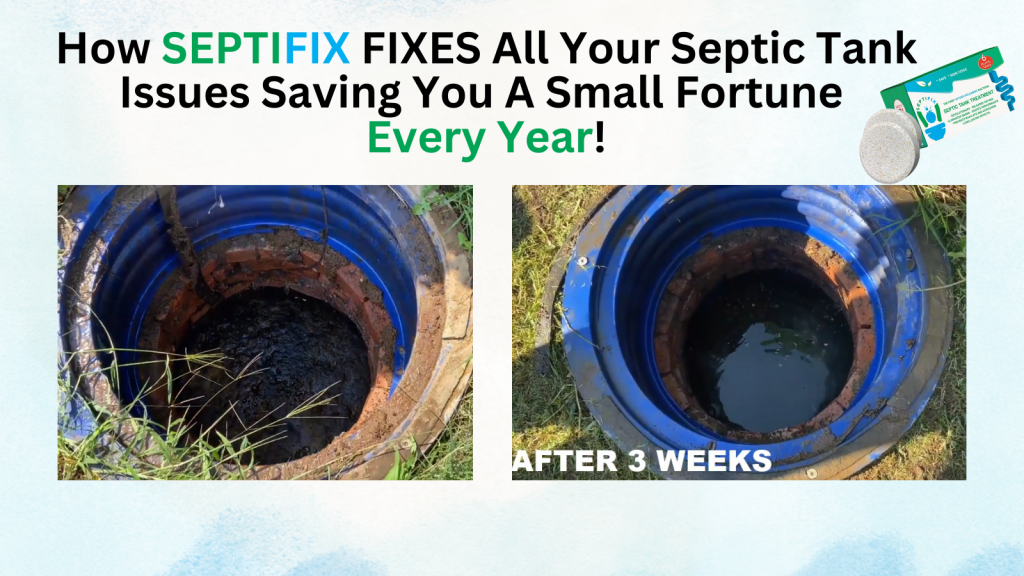Soil testing for septic installation is a critical first step in ensuring your septic system functions efficiently and meets local health regulations. Whether you’re building a new home or replacing an aging system, understanding your property’s soil composition helps determine the type, size, and placement of your septic system. Skipping this step can lead to costly failures and legal issues down the road.
In this guide, we’ll walk you through why soil testing matters, how it’s performed, and what the results mean for your septic plans.
Table of Contents
- Why Soil Testing Is Crucial for Septic Systems
- Types of Soil Tests for Septic Installation
- Understanding Soil Test Results
- When and How to Get Soil Testing Done
- Common Mistakes to Avoid
- Costs and Timeframe
- Soil Test Alternatives and Workarounds
- Contact Info and Resources
- FAQs: Soil Testing for Septic Installation
- Septifix
- Septic Permit Links by State
Why Soil Testing Is Crucial for Septic Systems
Before installing any septic system—whether a leach field, mound system, or aerobic treatment unit—you need to know if the soil can absorb and treat wastewater properly. Here’s why it matters:
- Site suitability: Poor soil can’t filter waste, causing contamination or system failure.
- Regulatory approval: Most counties and states won’t issue a permit without a passed soil test.
- System design: The results affect everything from trench depth to drain field size.
In regions where septic systems are called “on-site wastewater treatment systems” or “private sewage disposal systems,” soil testing is still required.
Types of Soil Tests for Septic Installation
Percolation (Perc) Test
The percolation test, often called a perc test, measures how quickly water drains through your soil. It’s a simple but effective way to assess absorption.
Steps:
- A small hole is dug (6–12 inches deep).
- It’s filled with water and allowed to soak in.
- The time it takes for the water to drop a specific amount is recorded.
Ideal result: Between 1 and 60 minutes per inch. Too fast or too slow can disqualify the site or require special system designs.
Soil Profile Test
A soil profile analysis, or soil morphology test, digs deeper—literally. A licensed professional (often a soil scientist or engineer) examines soil layers up to 4–6 feet deep.
They evaluate:
- Soil texture (sand, silt, clay)
- Color and structure
- Depth to bedrock or groundwater
- Evidence of seasonal saturation
This test often replaces or supplements the perc test, especially in states with stricter environmental regulations.
Understanding Soil Test Results
After testing, you’ll receive a report with technical data and often a recommendation for system type. Here’s how to interpret the main points:
- Sandy soils: Drain quickly; may require larger systems to allow time for treatment.
- Clay soils: Drain slowly; often unsuitable without a mound or alternative system.
- Loamy soils: Ideal for most conventional septic designs.
- Shallow bedrock: Limits drain field depth; may require above-ground systems.
- High water table: Risks contamination; often needs engineered alternatives.
👉 If results show that your site fails for a conventional system, you may still qualify for an engineered or aerobic treatment system.
When and How to Get Soil Testing Done
When Should You Test?
- Before purchasing land: To avoid investing in unusable property.
- Before applying for permits: Most health departments won’t proceed without approved test results.
- When upgrading or replacing a system: Especially if site conditions have changed.
Who Performs the Test?
- Licensed septic designers
- Registered soil scientists
- Environmental engineers
Always check your local health department requirements. In some counties, only government-approved testers are allowed to perform and certify soil tests.
Common Mistakes to Avoid
Relying on Outdated or Nearby Results
Just because your neighbor passed their soil test doesn’t mean you will. Soil can vary significantly—even just a few feet away.
Digging Test Holes Incorrectly
Improper hole size or depth can skew results. Professionals follow strict guidelines that ensure accuracy.
Ignoring Seasonal Conditions
Perform tests during a typical season—not right after a drought or heavy rainfall—so the results reflect average moisture levels.
Costs and Timeframe
- Cost range: $300–$1,000+, depending on location and complexity
- Time to complete: A few hours on-site, with results in 1–2 weeks
- Permit processing: May take additional time after testing is complete
Though the initial cost may seem steep, it’s far less than repairing or replacing a failed system later.
Soil Test Alternatives and Workarounds
If your soil fails the test for a conventional drain field, don’t worry—there are alternatives:
- Mound systems: Built above ground with imported sand to improve drainage.
- Aerobic treatment units (ATUs): Use oxygen to break down waste more effectively.
- Drip distribution systems: Use slow-release emitters for sites with marginal soil.
These options usually require more maintenance and higher installation costs, but they allow you to build on land that would otherwise be unusable.
Contact Info and Resources
Before scheduling your soil test, connect with your local health department or septic authority:
- EPA SepticSmart Program – National resource on septic system care
- National Onsite Wastewater Recycling Association (NOWRA) – Find qualified septic professionals in your area
- State Health Department Directories – Links to local regulatory bodies
Additionally, reach out to nearby licensed septic installers or soil scientists for pricing and availability.
Conclusion
Soil testing for septic installation isn’t just a bureaucratic box to check—it’s essential for designing a safe, effective, and legal on-site wastewater treatment system. The results inform what type of system you need and help protect both your investment and the environment. If you’re unsure where to begin, consult a licensed professional and your local health department.
Ready to install a septic system? Make soil testing your first step—it can save you time, money, and headaches down the road.
FAQs: Soil Testing for Septic Installation
What is a soil percolation test, and why is it important for a septic system?
The percolation test (or perc test) measures the speed at which water infiltrates through soil. This test is critical to determine whether your soil can absorb wastewater efficiently while ensuring proper filtering and environmental protection.
How do soil composition and soil type affect septic system performance?
The composition of your soil—whether it’s sandy, clay, or loamy—greatly affects septic system efficiency. For instance, sandy soil offers quick drainage but poor retention, while clay soil retains wastewater but drains very slowly, which can complicate septic operations Septic-Masters.
What factors should I consider when selecting a location for a septic system installation based on soil testing?
Choosing the right location requires considering:
- Soil porosity and composition
- The depth of soil layers
- The proximity of the water table
- Soil structure variations
These elements impact wastewater absorption efficiency and overall system longevity.
Can soil testing help prevent costly septic system repairs or failures?
Conducting soil tests allows homeowners to address issues before they become costly. Identifying poor drainage, contamination risks, or soil deficiencies early ensures a more effective and environmentally responsible installation.
What local regulations and guidelines must you follow for soil testing before a septic installation?
Local health departments and Michigan wastewater management guidelines often mandate soil testing to ensure compliance. This includes following septic installation permits, soil composition evaluations, and environmental protection protocols, ensuring public health and sustainability.
Directory | West Virginia Septic Service Providers : Best Professionals
Winter Pumping: Should You or Shouldn’t You?
Septic Installer Registration in Bay County, Michigan
Sustainable Materials for Septic Systems: Eco-Friendly Solutions
DIY Septic Tank Installation: A Complete Guide for Homeowners
Directory | Washington Septic Service Providers | Part 2
Directory | Washington Septic Service Providers | Part 1
DIY Repairs Are Always Cheaper
Septifix
